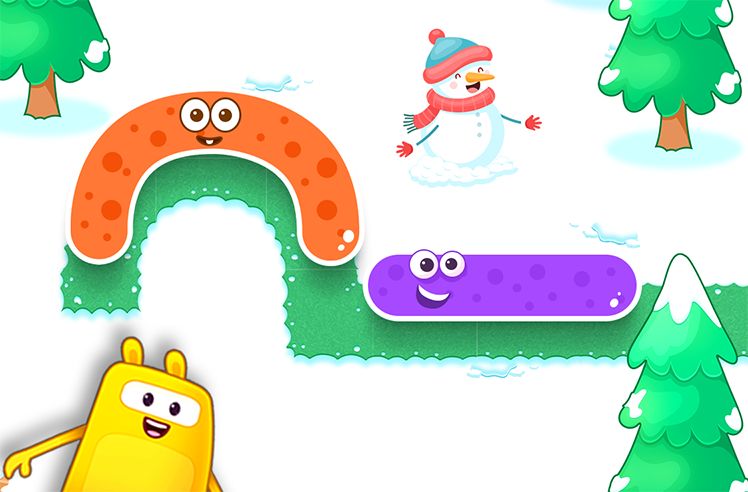CONTENT TYPE
SUBJECT
- Number Sense (381)
- Number Recognition (30)
- Number Tracing (20)
-
Number Sequence
(56)
- Counting (141)
- Compare Numbers (47)
-
Compare Objects
(7)
-
Compare Numbers Using Place Value
(5)
-
Compare 2-Digit Numbers
(6)
-
Compare 3-Digit Numbers
(10)
-
Order Numbers
(15)
- Skip Counting (36)
-
Even And Odd Numbers
(3)
- Place Value (78)
- Round Numbers (16)
- Addition (369)
-
Add With Pictures
(38)
-
Addition Properties
(6)
- Addition Strategies (136)
- Compose And Decompose Numbers (66)
-
Count All To Add
(9)
-
Add Using A Number Line
(7)
-
Count On To Add
(11)
-
Add With 10
(2)
-
Doubles And Near Doubles Addition Strategy
(21)
-
Make 10 Strategy
(4)
-
Add Three Whole Numbers
(20)
- 2-Digit Addition (45)
- 3-Digit Addition (65)
- 4-Digit Addition (30)
- Large Numbers Addition (10)
- Subtraction (240)
-
Subtract With Pictures
(35)
- Subtraction Strategies (48)
- 2-Digit Subtraction (30)
- 3-Digit Subtraction (57)
- 4-Digit Subtraction (23)
- Large Numbers Subtraction (8)
- Multiplication (196)
- Multiplication Strategies (56)
-
Multiplication With Equal Groups
(16)
-
Multiplication With Arrays
(20)
-
Multiplication Sentences
(11)
-
Multiplication On A Number Line
(13)
-
Repeated Addition To Multiply
(17)
- Times Tables (88)
-
Multiplication By 2
(10)
-
Multiplication By 3
(10)
-
Multiplication By 4
(9)
-
Multiplication By 5
(10)
-
Multiplication By 6
(9)
-
Multiplication By 7
(8)
-
Multiplication By 8
(8)
-
Multiplication By 9
(9)
-
Multiplication By 10
(5)
-
Multiplication By 11
(5)
-
Multiplication By 12
(5)
- Multiplication Properties (15)
-
Multiply By Multiples Of 10
(8)
-
Estimate Products
(4)
- Multi-Digit Multiplication (40)
- Division (119)
-
Divide On A Number Line
(3)
- Division Facts (60)
-
Division By 2
(5)
-
Division By 3
(5)
-
Division By 4
(5)
-
Division By 5
(5)
-
Division By 6
(5)
-
Division By 7
(5)
-
Division By 8
(5)
-
Division By 9
(5)
-
Estimate Quotients
(4)
- Long Division (36)
- Fractions (186)
-
Fractions Using Models
(28)
-
Fractions On A Number Line
(10)
- Compare Fractions (22)
- Equivalent Fractions (25)
-
Mixed Numbers As Improper Fractions
(4)
- Fractions Operations (91)
- Decimals (138)
- Read And Write Decimals (40)
-
Compare Decimals
(22)
-
Order Decimals
(15)
- Round Decimals (12)
-
Convert Decimals To Fractions
(11)
- Decimal Operations (40)
- Geometry (129)
-
Positional Words
(5)
- Lines, Line Segments, Rays (6)
-
Angles
(15)
- Shapes (80)
- Partition Into Equal Parts (13)
-
Coordinate Plane
(7)
- Data Handling (46)
- Measurement (125)
- Length (34)
- Height (6)
-
Weight
(12)
-
Capacity
(12)
-
Conversion Of Measurement Units
(15)
-
Perimeter
(19)
-
Area
(18)
-
Volume
(8)
- Time (35)
-
Am And Pm
(2)
-
Time In Hours
(5)
-
Time In Half Hours
(4)
-
Time In Quarter Hours
(7)
-
Time To The Nearest 5 Minutes
(11)
-
Time To The Nearest Minute
(2)
-
Elapsed Time
(3)
- Money (60)
-
Identify Coins
(13)
-
Counting Money
(14)
-
Compare Money
(7)
-
Add And Subtract Money
(17)
-
Multiply And Divide Money
(7)
- Algebra (54)
-
Number Patterns
(29)
- Expressions And Equations (13)
-
Factors And Multiples
(7)
-
Prime And Composite Numbers
(5)
- Word Problems (97)
- Reading (2,269)
- Phonics (2,225)
- Bossy R (60)
-
Diphthongs
(22)
- Consonant Blends (118)
- Alphabet (262)
- Letter Recognition (262)
-
Letter A
(9)
-
Letter B
(9)
-
Letter C
(9)
-
Letter D
(9)
-
Letter E
(9)
-
Letter F
(9)
-
Letter G
(9)
-
Letter H
(9)
-
Letter I
(9)
-
Letter J
(9)
-
Letter K
(9)
-
Letter L
(9)
-
Letter M
(9)
-
Letter N
(9)
-
Letter O
(9)
-
Letter P
(9)
-
Letter Q
(9)
-
Letter R
(9)
-
Letter S
(9)
-
Letter T
(9)
-
Letter U
(9)
-
Letter V
(9)
-
Letter W
(9)
-
Letter X
(9)
-
Letter Y
(9)
-
Letter Z
(9)
-
Lowercase Letters
(78)
-
Uppercase Letters
(78)
-
Matching Lowercase And Uppercase Letters
(59)
- Alphabetical Order (54)
-
Letter Sounds
(130)
- Vowels (158)
- Long Vowel Sounds (75)
-
Long Vowel A Sound
(15)
-
Long Vowel E Sound
(17)
-
Long Vowel I Sound
(15)
-
Long Vowel O Sound
(15)
-
Long Vowel U Sound
(13)
-
Silent E
(12)
- Short Vowel Sounds (81)
-
Short Vowel A Sound
(59)
-
Short Vowel E Sound
(26)
-
Short Vowel I Sound
(59)
-
Short Vowel O Sound
(44)
-
Short Vowel U Sound
(24)
- Vowel Teams (65)
- Blending (432)
- Consonant Digraphs (8)
-
Double Consonants
(8)
-
Rhyming Words
(61)
-
Trigraphs
(38)
-
Three Letter Blends
(19)
- Sight Words (1,035)
- Reading Comprehension (44)
-
Writing
(124)
-
Handwriting
(124)
-
Letter Tracing
(124)
-
Letter Tracing A
(6)
-
Letter Tracing B
(6)
-
Letter Tracing C
(6)
-
Letter Tracing D
(6)
-
Letter Tracing E
(6)
-
Letter Tracing F
(6)
-
Letter Tracing G
(6)
-
Letter Tracing H
(6)
-
Letter Tracing I
(6)
-
Letter Tracing J
(6)
-
Letter Tracing K
(6)
-
Letter Tracing L
(6)
-
Letter Tracing M
(6)
-
Letter Tracing N
(6)
-
Letter Tracing O
(6)
-
Letter Tracing P
(6)
-
Letter Tracing Q
(6)
-
Letter Tracing R
(6)
-
Letter Tracing S
(6)
-
Letter Tracing T
(6)
-
Letter Tracing U
(6)
-
Letter Tracing V
(6)
-
Letter Tracing W
(6)
-
Letter Tracing X
(6)
-
Letter Tracing Y
(6)
-
Letter Tracing Z
(6)
- Food (60)
- Animals (58)
- Seasonal (28)
- Kitchen (11)
-
Musical Instruments
(30)
-
Birds
(20)
-
Space
(12)
- Transport (9)
-
Insects
(9)
-
Scene
(8)
-
Professions
(8)
-
Monuments
(8)
-
Household Items
(8)
-
Flowers
(8)
-
Buildings
(8)
-
Colors
(7)
-
Toys
(4)
- Coloring (181)
- Animals (32)
- Seasonal (28)
- Food (24)
- Transport (8)
-
Space
(8)
-
Scene
(8)
-
Professions
(8)
-
Musical Instruments
(8)
-
Monuments
(8)
- Kitchen (8)
-
Insects
(8)
-
Household Items
(8)
-
Flowers
(8)
-
Buildings
(8)
-
Birds
(8)
- Music (36)
-
Cooking
(7)
-
Stories
(10)
-
VIEW DETAILS
 Letter Tracing F
Letter Tracing FTracing Big Letters with Standing & Sleeping Lines - E, F, H, I, L & T Game
Introduce your preschooler to the world of letter tracing with this engaging game. They'll practice tracing uppercase letters E, F, H, I, L, and T using sleeping and standing lines. This game helps build essential writing skills while making learning fun and interactive. Watch as they gain confidence in writing, one line at a time!
-
VIEW DETAILS
 Letter Tracing F
Letter Tracing FTracing Small Letters with Standing, Sleeping & Curvy Lines - f, h, m, n, & r Game
Ready for some tracing fun? This game lets your child trace lowercase letters f, h, m, n, and r using standing, sleeping, and curvy lines. Perfect for building essential writing skills, it makes learning playful and engaging. Watch your little one develop confidence in letter tracing while having a great time! Join the fun and start tracing today!
-
VIEW DETAILS
 Letter Tracing F
Letter Tracing FLet's Make the Letter F Game
Let's make learning the letter F fun and exciting! In this interactive game, your child will discover how to form the letter F using slanting and sleeping lines. Perfect for young learners, this game builds essential letter and sound skills. Watch your child enjoy the process of writing and boost their confidence in letter formation. Start the adventure today!
-
VIEW DETAILS
 Letter Tracing F
Letter Tracing FTime to Trace Uppercase F Game
Get ready to trace the uppercase F with this fun game designed for preschoolers! Kids will enjoy learning to trace letters, which boosts their writing skills and helps them recognize the alphabet. This game focuses on the letter F while also introducing E and G, making learning interactive and enjoyable. Start tracing and watch your child master letter recognition!
-
VIEW DETAILS
 Letter Tracing F
Letter Tracing FTime to Trace Lowercase f Game
Get your child ready to trace lowercase f with this fun game. Tracing letters builds essential writing skills and helps in recognizing letters. Kids will enjoy practicing letter tracing, making learning enjoyable and effective. Perfect for preschoolers to start their journey in ELA. Let's get going with this exciting activity!
-
VIEW DETAILS
 Letter Tracing F
Letter Tracing FLearning to Trace the Letter F Game
Trace the uppercase and lowercase F in this exciting game! Your child will practice writing and recognizing the letter F, enhancing their letter identification skills. This game also introduces sounds for letters like f, n, o, d, c, and h, making it a comprehensive learning experience. Perfect for young learners eager to explore the alphabet!
Your one stop solution for all grade learning needs.
Give your child the passion and confidence to learn anything on their own fearlessly





















